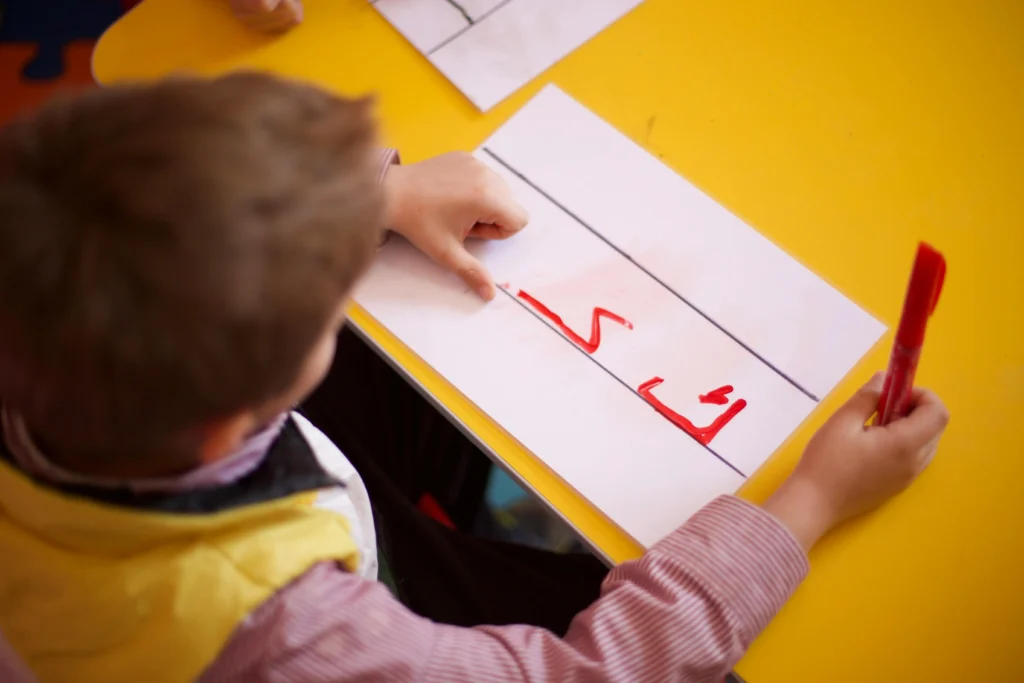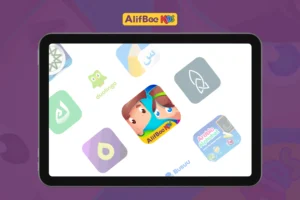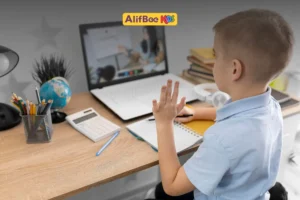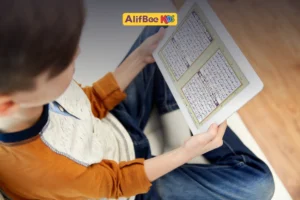Reading is a golden gate that, once opened, leads to pathways of education and knowledge that could never be accessed through any other door.
Opening this golden gate of learning to read Arabic for your kids may not be an easy mission. You will face some challenges, but in this article, we will provide a helpful resource of simple tips and tricks that can greatly help you on your journey.
By the end of this blog post, you’ll discover a few fun ways to turn your kids’ Arabic reading practice into an enjoyable and entertaining experience!
Why Start Arabic Reading Early? (Benefits & Motivation)
The Arabic language is a widely spoken language that allows its speakers to explore a magical world of art and unique literature, travel to culturally and historically rich countries like Egypt and Morocco, and, most importantly, read the Holy Qur’an in its original language.
Teaching Arabic to kids at an early age will improve their phonemic awareness, indirectly immerse them in a culture they can relate to, and give them the advantage of bilingualism. Starting to teach them how to read Arabic early is like breaking the ice between two strangers before they become friends — it helps them become familiar with letter shapes and diacritics.
You can join your kids in their learning journey by making it a fun time for both of you — a time to bond, learn, and create memories that last a lifetime. If you want your kids to learn Arabic naturally, focus on interaction and positive reinforcement.
Choosing to teach your child the Arabic language will not be a walk in the park. Your child will likely encounter a few challenges, one of which is diglossia. Diglossia is not the same as bilingualism, though it may be considered a form of it. It occurs in languages where the daily spoken version of a word differs from its written form. Arabic is one such language.
Diglossia can present a challenge to young learners as they try to read simple Arabic words they don’t often hear in their community. This challenge should be embraced by parents, understood when it slows progress, and appreciated for its positive effects on children’s cognitive development. Engaging the working memory to synchronize the auditory and visual versions of a word is one of these benefits — as highlighted in a 2024 study by Raphiq Ibrahim.
What Kids Must Learn First
Arabic Alphabet & Letter Recognition
You should first introduce the shapes of the Arabic letters in their isolated forms, then teach kids how to blend the letters together. The goal is to help them recognize how each letter looks at the beginning, middle, and end of words.
The way a child receives information determines whether it sticks in their mind or not. Instead of having your child write the same letter a hundred times, create flashcards and repeat until they can recognize the letter. You can then ask your kids to draw the letter in sand or on a pile of rice.
A fun way to make it fun and help your child focus on the shape of the letter for a longer time is to draw the letter and ask them to color it in their favorite colors. This helps reinforce visual memory while they play.

Mastering Diacritics (Harakaat)
Once your child masters the shapes of the Arabic letters in both isolated and connected forms, gradually introduce fatha, kasra, damma, sukun, shadda, and tanwin. These harakaat have no direct English equivalents, so introduce the concept slowly before moving on to full diacritic practice. Use diacritic-only reading (words with short vowels only) for early exercises.
At this stage, you should involve fun with learning. Play games like “Diacritics Detective”, where your child identifies and fills in missing harakaat. Videos, songs, and online Arabic learning apps like AlifBee Kids can make learning Arabic harakaat enjoyable and interactive. With consistent practice, children will gradually transition from fully diacritized texts to more natural ones and achieve correct pronunciation.
Phonemic Awareness & Sound Blending
Now that your child has built a foundation in the alphabet and harakaat, you can move on to the next level—teaching them how to blend letters to form simple three-letter words.
Take it slowly, one word at a time. Pronounce the word slowly and ask your child to blend the sounds together to form the complete word.
This helps them connect sound and meaning effectively.
Fun & Engaging Practice Ideas
Flashcard Games & Memory Matching
Create pairs of letter or vowel-letter combinations, then ask your child to flip and match them. If making physical cards feels time-consuming, you can use digital flashcard apps that include pictures.
Turning these into short Turning these into short conversations during play can make the activity even more interactive. during play can make the activity even more interactive.
Reading Simple Word Lists & Word Families
Make themed word lists of simple Arabic words and repeat them every day in a fun setting. For example, choose a vacation week to be “Animals Week,” where you practice animal names while visiting a zoo or farm. It helps to prepare the list beforehand and take it with you on the trip!
If it’s cold outside, try “Furniture Week.” Write down furniture vocabulary and practice it together by asking your child to touch the piece of furniture they can read.
Sentence & Short Text Reading (with Guidance)
After your child becomes familiar with the Arabic alphabet and diacritics, start introducing short sentences with diacritical marks. First, make sure these sentences are composed of the simple phrases you practiced earlier in your word lists.
Use echo reading, where you read and your child repeats after you to reinforce their confidence.
Use Stories, Rhymes & Poetry
As we always emphasize, keeping learning fun is essential to every child’s educational journey. The alphabet, diacritics, and sounds only matter to a child if they can enjoy using them! Sing simple rhymes together and ask your child to complete the rhyme with whichever word they think fits. Read short, colorful stories together and play “Word Hunter,” where your child looks for a specific word repeated throughout the story.
Step-by-Step Plan for Children’s Arabic Reading Practice
Here is a step-by-step guide to helping your child reach the golden gate of the Arabic language slowly and steadily:
- Weeks 1–2: Introduce the Arabic letters daily, first in their isolated forms and then in their connected forms (beginning, middle, and end of words). You can also gently introduce diacritics during this phase to help with pronunciation.
- Weeks 3–4: Teach your child to blend sounds to form two- or three-letter words. Choose basic and relatable words your child might use in daily life.
- Weeks 5–6: Form short sentences with diacritics. Practice echo reading and keep the sentences simple. Use words you have already practiced to avoid frustration.
- Week 7 and beyond: Introduce short stories and rhymes to put their newly acquired reading skills into practice! At this stage, you can gradually reduce diacritics and let your child explore simple Arabic texts independently.
In this journey, as with any learning process, consistency is key. Devote at least 10 minutes daily to your goal—it can work wonders. Track your child’s progress and celebrate even the smallest wins!
Common Mistakes & How to Overcome Them
Most parental mistakes during this journey stem from impatience. Understand that this is a long process that must become part of your daily routine—just like brushing teeth or making the bed. Don’t push too hard or move too quickly. Set clear guidelines but follow your child’s pace.
Avoid removing diacritics too soon; that’s like putting your child on a bike without brakes—they might fall and become afraid to try again!
Even if your main focus is reading Arabic, remember that language learning should be holistic. Combine reading, speaking, and writing for the best results.
Keep things fun and acknowledge progress. Recognize your child’s level and learning curve—and also your own feelings. Don’t hesitate to use supportive tools like online Arabic games or Arabic learning apps if you feel the process is becoming overwhelming.
Final word
Teaching Arabic reading to kids isn’t as simple as buying a new toy—it takes time, patience, and persistence. It may feel tiring and exhausting at times, but it’s worth every effort.
It will pay off with every job opportunity they gain because of their language skills, every show they watch and understand, and every page of the Qur’an they read with confidence.
Take the first step to start learning Arabic with your child by downloading AlifBee Kids and open for them doors to the great treasure of the Arabic language.





